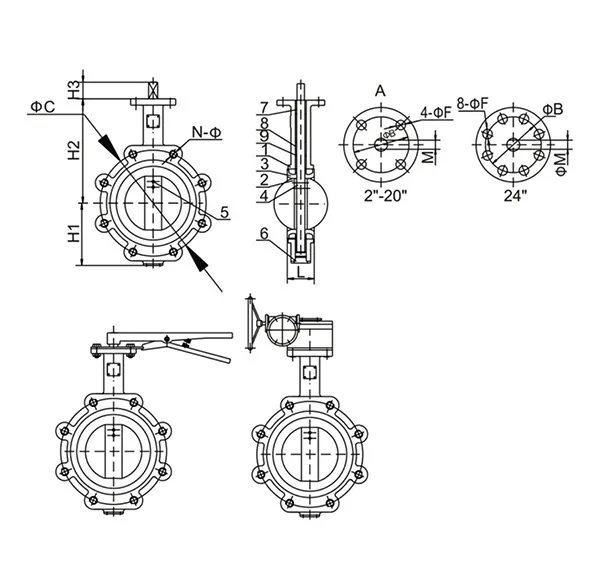ਨਵੰ. . 25, 2024 09:14 Back to list
Understanding the Functionality of Dual Ball Check Valves in Fluid Systems
Understanding Double Ball Check Valves Function and Applications
Double ball check valves are vital components in fluid control systems, extensively utilized across various industries due to their reliability and efficiency. Unlike conventional check valves, the double ball design offers enhanced protection against backflow, ensuring that fluids only flow in one direction. This article delves into the working principle, advantages, and applications of double ball check valves.
Working Principle
The functionality of double ball check valves revolves around two spherical balls that operate independently within the valve body. When fluid flows in the intended direction, the pressure forces both balls upwards, allowing passage through the valve. However, if there is any attempt at reverse flow, the balls are pushed back into their seats, effectively sealing the valve and preventing any backflow. This dual-ball mechanism creates an efficient barrier, making it particularly suitable for high-pressure applications.
Advantages
One of the primary advantages of double ball check valves is their enhanced sealing ability. Unlike single ball check valves, which might be prone to wear and tear over time, the dual ball design distributes the pressure more evenly and reduces the risk of leaks. Furthermore, these valves are typically constructed from robust materials such as stainless steel or brass, enabling them to withstand corrosive environments and high-pressure scenarios.
double ball check valve

Another significant benefit is that they require minimal maintenance. Once installed, double ball check valves can function effectively for years without needing frequent checks or replacements, resulting in lower operational costs. Moreover, their simple design means that they can be easily integrated into existing systems, making them a preferred choice for upgrading fluid control systems.
Applications
Double ball check valves are extensively used in various sectors, including water treatment, chemical processing, and food and beverage production. In water treatment plants, they prevent backflow that could lead to contamination of clean water supplies. In the chemical industry, their ability to handle corrosive substances makes them invaluable for maintaining the integrity of the production process. Additionally, in food and beverage applications, double ball check valves ensure that the flow remains unidirectional, thereby preserving product quality and safety.
Conclusion
In conclusion, double ball check valves are essential for ensuring fluid control and preventing backflow in numerous applications. Their reliable design, combined with durability and low maintenance requirements, makes them a popular choice for engineers and operators in diverse industries. Understanding these valves' functions and benefits can greatly enhance the efficiency and longevity of fluid systems. As industries continue to prioritize safety and reliability, the role of double ball check valves will likely expand, further cementing their place in modern engineering solutions.
Share
-
Reliable Wafer Type Butterfly Valves for Every IndustryNewsJul.25,2025
-
Reliable Flow Control Begins with the Right Ball Check ValveNewsJul.25,2025
-
Precision Flow Control Starts with Quality ValvesNewsJul.25,2025
-
Industrial Flow Control ReliabilityNewsJul.25,2025
-
Engineered for Efficiency Gate Valves That Power Industrial PerformanceNewsJul.25,2025
-
Empowering Infrastructure Through Quality ManufacturingNewsJul.25,2025